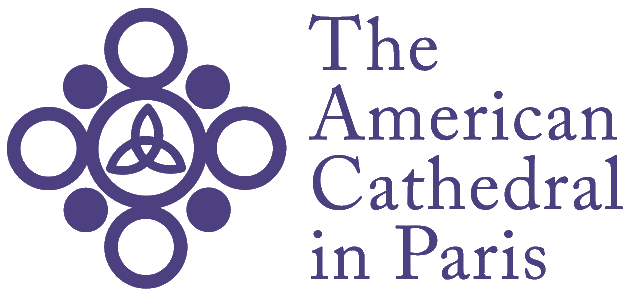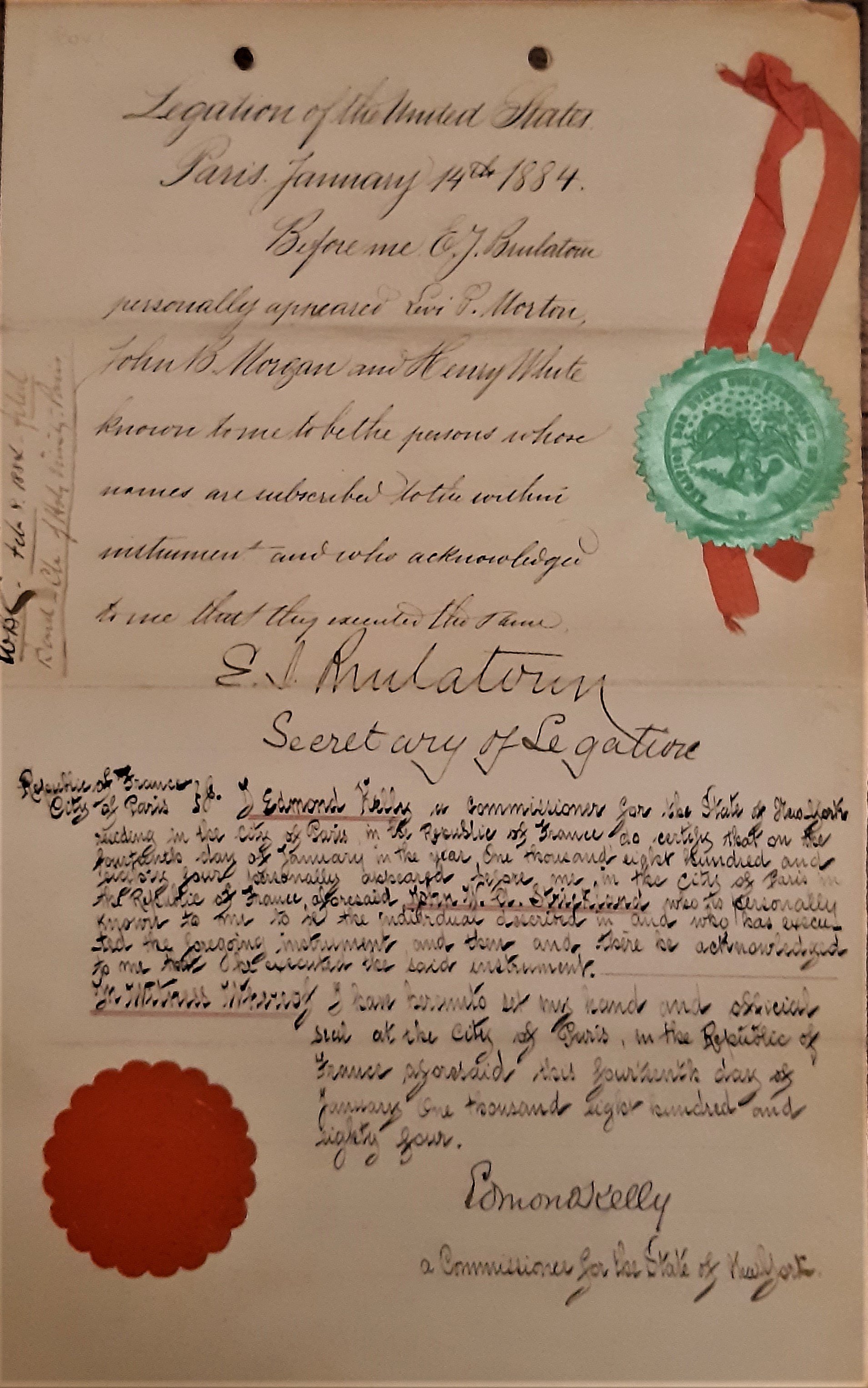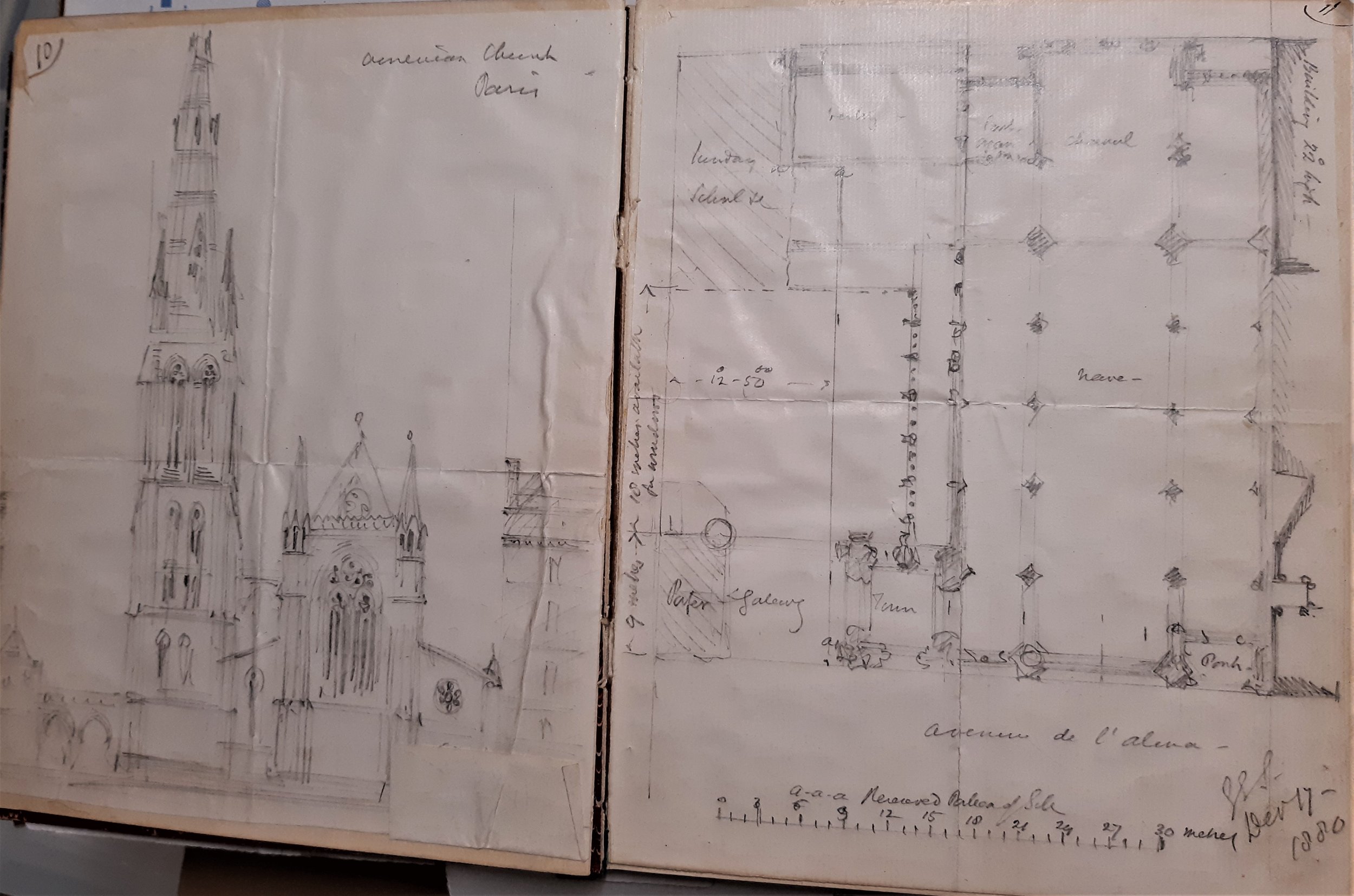Becoming a Parish 1830-1886
Holy Trinity Legislation seal, 1884.
An early community of Americans living in Paris brought Protestant preachers from the United States to hold services first in the Chapelle Taitbout, and from 1835-40 in the palatial home of Col. Herman Thorn and his family. The mansion is today the Hôtel Matignon, seat of the French prime minister. When Thorn returned to New York in 1846, services moved to the Marboeuf Chapel and other venues.
In 1857 an American Chapel was founded and tried to bridge differences in Protestant worship from highly evangelical to deeply liturgical, at one point alternating morning and evening services—but it was not a compromise to last. On August 15th, 1858, Episcopal services began at Chapelle Taitbout, with Rev. William O. Lamson of New York officiating. Within a year, the tiny congregation (estimated at about 40 regulars) had rented a room at 14, rue du Faubourg St. Honoré and there established the first Episcopal church outside of the United States. The founding vestry, which included Hamilton Fish and Theodore S. Evans as wardens, chose the name Church of the Holy Trinity, and placed itself under the aegis of the General Convention of the Protestant Episcopal Church of the United States.
George Edmund Street’s sketch of the Cathedral, 1880.
The room quickly became too small, but efforts to raise money to build a church were hampered by the American Civil War (1861-65). Holy Trinity parishioners occupied both sides of the Mason-Dixon line, but northerners seem to have prevailed and southerners moved to the British Church. Many Americans resident in Paris also returned home for the war. But by summer 1863, the vestry had collected enough money to buy a lot at 17, rue Bayard, and construction began on a freestone church with a rose window and seating for 500. The church was consecrated on September 12th, 1864, and Rev. Lamson named its first rector.
When the 1870 Franco-Prussian war began, Lamson joined the American Sanitary Committee, which set up a field hospital in Paris to treat wounded soldiers. When the Prussians encircled and laid siege to the city, some 250 Americans (of some 6,000 at the start of the war) were trapped inside, along with 2,000 British. Lamson helped them all, providing food and assistance, working closely with American minister Elihu Washburne.
Harper’s Weekly, 1890
Lamson resigned in 1872, having led the church for fourteen years, and Rev. John Brainerd Morgan, a cousin and brother-in-law of the banker J.P. Morgan, was named rector. The church continued to grow, and by 1875 the vestry decided the rue Bayard structure was no longer adequate. They raised funds and in July 1880 bought two lots on then-avenue de l’Alma. The rue Bayard church was sold to the Scots’ Kirk, which owns the property today, although the original structure was demolished in the 1950s.
The vestry contracted George Edmund Street, a renowned Gothic Revival architect, who met Rev. Morgan at the site in December 1880 and quickly sketched out a plan. With slight adaptations, that design was followed, and the cornerstone laid in March 1881. Street had designed other churches in England and Rome, and had been working on the Law Courts of London, when he died suddenly in December 1881. His son, Arthur Street, supervised the construction, carried out by Henry Lovatt, of Wolverhampton, England. The first service was held on September 12th, 1886, and Holy Trinity was consecrated on Thanksgiving Day, November 25th, 1886.



